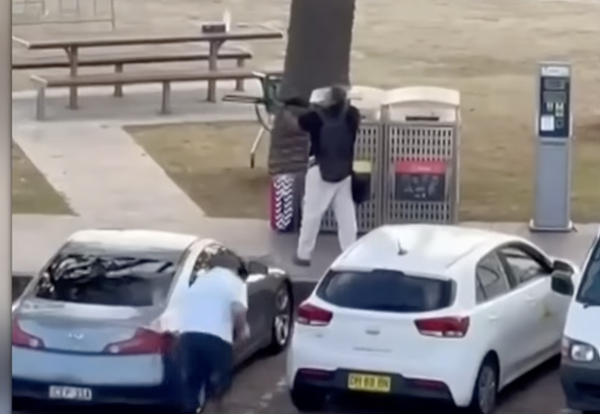
The bust was unusual – a narco submarine capable of carrying more than 1.5 tons of cocaine. There were no drugs onboard this time, but most notably, there were no traffickers.
Last week, the Colombian navy announced that it had seized an “autonomous semisubmersible”, the first seizure of such a vessel in the country’s waters.
Detected near Santa Marta, off Colombia’s Caribbean coast, the small grey vessel was equipped with antennas and a Starlink modem. Two surveillance cameras were also installed: one on the bow, providing a real-time view of the craft’s trajectory and obstacles, and another inside to monitor the engine and transmission. Officials believe the uncrewed sub was on a trial run to transport cocaine to the United States or Europe.
“The discovery reflects a migration toward more sophisticated unmanned systems that increase evasion capabilities, and which pose a growing challenge to international maritime security,” said Adm Juan Ricardo Rozo Obregón, commander of the Colombian navy.
The navy has warned that autonomous technologies are “an emerging threat that is transforming the transnational criminal landscape”, and said that it believed the vessel was operated by the Gulf Clan, Colombia’s largest drug-trafficking group.
The discovery comes as Colombia – the world’s leading cocaine producer – faces record-high production of the drug, fuelled by surging global demand. The country’s estimated coca leaf cultivation increased from 204,000 to 253,000 hectares (504,000 to 625,000 acres) in 2023, according to the United Nations.
While traffickers have used crewed semisubmersibles for decades, the recent advent of the uncrewed vessels shows that gangs are making significant technological advances. They are also seeking new ways to eliminate the risk of captured operators cooperating with authorities.
“It’s definitely a sign of how creative traffickers are becoming, and how ‘narco subs’ have evolved significantly in both design and technology,” said Henry Shuldiner, an investigator at the InSight Crime thinktank, who co-authored a report on the rise of narco subs. “This unmanned model seems like the next step in that evolution.”
Shuldiner said that traffickers were testing whether removing crews – which typically involve at least four people, particularly for long transatlantic journeys – could make the lucrative trade more efficient.
“The fact that this appeared to be a test run shows traffickers are willing to invest in research and development, even if that means losing a vessel to authorities,” he said. Building a semisubmersible can cost as little as $150,000, though most estimates place the cost between $1m and $2m.
Juana Cabezas, a researcher at Colombia’s Institute for Development and Peace Studies, told AFP that Mexican drug cartels, which operate in Colombia, began “hiring technology experts and engineers to develop an unmanned submarine” as far back as 2017, adding that drone vessels made it harder for the authorities to identify those behind the shipments.
Colombian law punishes the use, construction, possession and transportation of semisubmersibles with penalties of up to 14 years in prison.
Nonetheless, a near-record number of the low-profile vessels were intercepted crossing the Atlantic and Pacific in 2024, according to InSight Crime.
“In some years, we’ve seen 30 or more interdictions globally. And that’s just the ones we know about,” said Shuldiner. “Some US officials estimate that only around 5% of these vessels actually get caught. So even with near-record seizures in 2024, most are still slipping through.”
While most cocaine is still smuggled on container ships, narco subs are playing a growing role, especially for long-haul, transoceanic routes, he added.
The Colombian navy said that in the first half of 2025, 10 semisubmersibles were detected in different regions of the continent, all adapted to make them difficult to track by radar, and even mobilise with partial autonomy.
Sergio Guzmán, the director of Colombia Risk Analysis, said that while this marks the first capture in Colombian waters, it is most likely not the first deployment. “The authorities are one step behind the criminals when it comes to these things,” he said.
He warned it would be “very difficult” for Colombia and other governments to “keep up” unless countries improve information sharing and cooperation.
Globally, cocaine production soared by nearly 34% in 2023 compared with the previous year, while an estimated 25 million people used the drug, up from 17 million a decade earlier.







